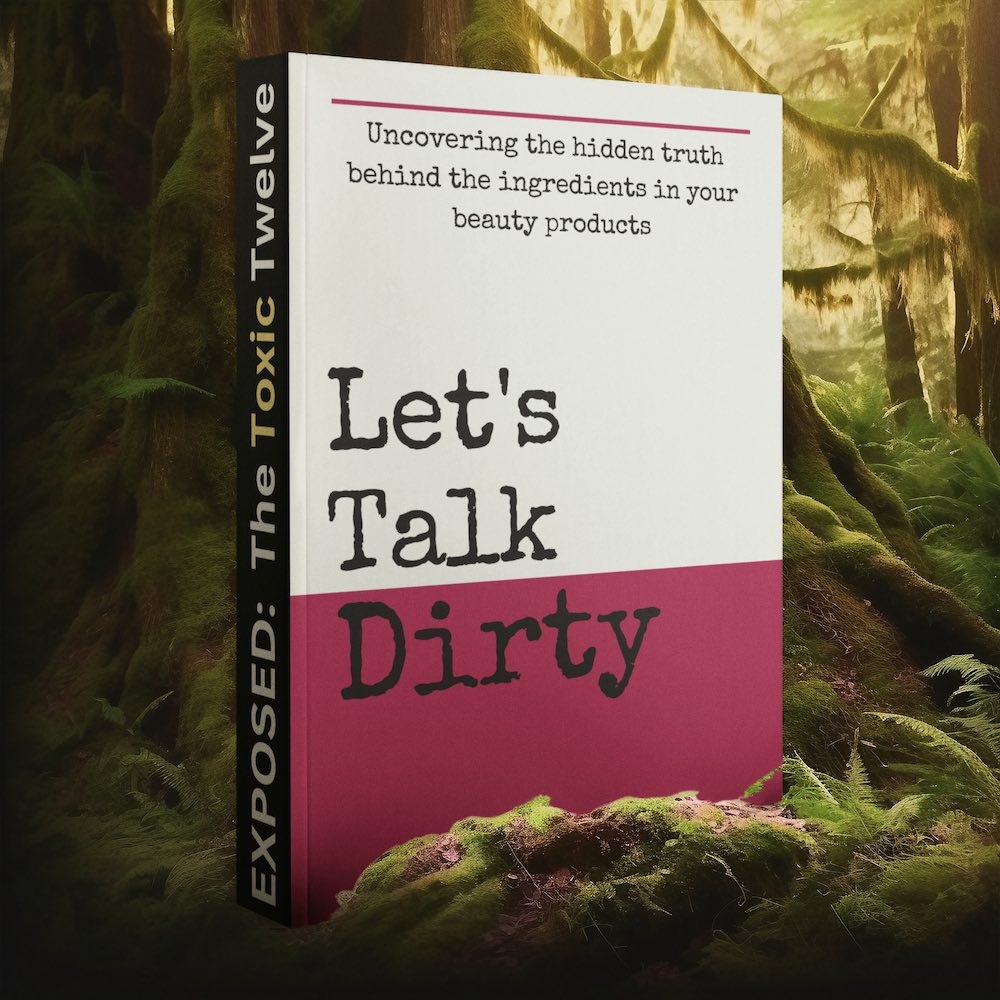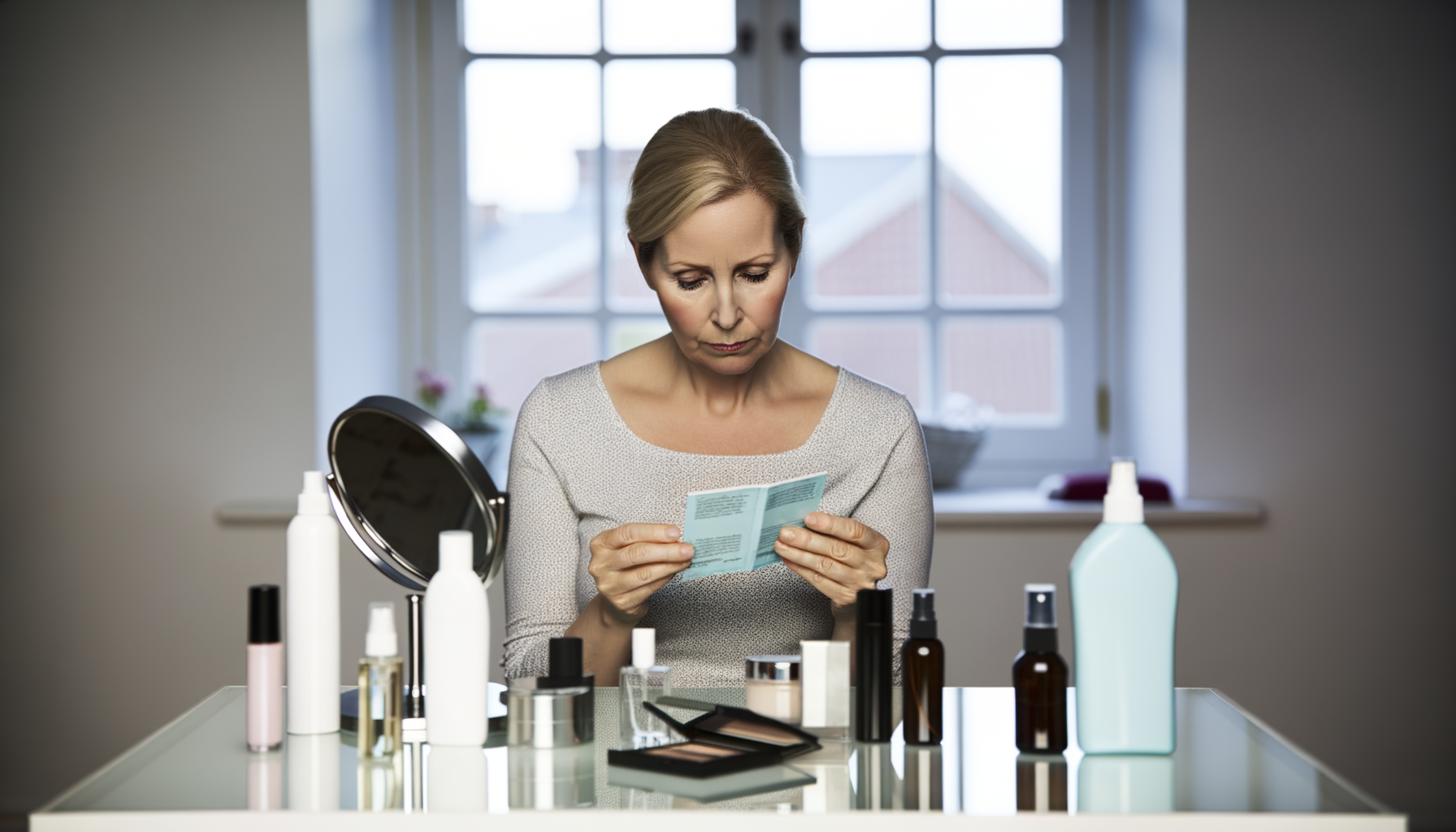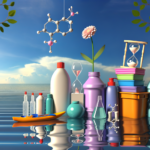Menopause and Environmental Factors
Menopause marks a significant transition in a woman’s life, typically occurring between the ages of 45 and 55. It signifies the end of reproductive capability and is characterized by the cessation of menstrual periods for twelve consecutive months. This biological milestone is a natural part of aging and is primarily driven by the decline in the production of the hormones estrogen and progesterone by the ovaries. The onset of menopause can lead to various physiological changes, including alterations in bone density, cardiovascular health, and notably, skin health. The skin, being the largest organ of the body, often reflects the internal hormonal changes, exhibiting symptoms such as dryness, thinning, and increased wrinkling.
The Role of Environmental Factors in Reproductive Health
While menopause is a natural biological process, environmental factors can influence the timing and experience of this transition. Exposure to certain chemicals, lifestyle choices, and overall health can impact reproductive health and potentially lead to early menopause. Environmental toxins, such as endocrine-disrupting chemicals (EDCs), found in various consumer products, including beauty products, have been scrutinized for their potential role in disrupting hormonal balance and advancing the onset of menopause.
Overview of Research Linking Beauty Products to Early Menopause
Recent research has begun to explore the connection between the use of certain beauty products and early menopause. Beauty products often contain a plethora of chemicals, some of which are not rigorously regulated by the Food and Drug Administration (FDA). Studies have highlighted concerns over chemicals like parabens, phthalates, and triclosan, which are known to possess estrogenic or anti-androgenic properties. These substances can interfere with the body’s endocrine system, potentially leading to earlier menopause by affecting mechanisms such as DNA repair, oxidative stress, and ovarian toxicity. While the data is still emerging, the correlation between chronic exposure to these chemicals and reproductive health warrants further investigation. Women who consistently use cosmetics throughout their lives may be particularly at risk, emphasizing the need for more research to elucidate the relationship between beauty products and menopause onset.

Do you have the most commonly used but toxic, disease bringing chemicals in your skin care? Many chemicals in skincare are hormone disruptors and make menopause symptoms worse.
Find out more…
The Science Behind Menopause and Chemical Exposure
Key Findings from the PLOS ONE Study
The PLOS ONE study provided a comprehensive analysis of the potential link between beauty products and early menopause. The research focused on the presence of certain chemicals in the blood and urine samples of women and their association with the timing of menopause. The study found that women with higher levels of specific chemicals, such as dioxins, phthalates, and polychlorinated biphenyls (PCBs), experienced menopause 1.9 to 3.8 years earlier than those with lower levels. This suggests a statistical relationship between chemical exposure and the onset of menopause, highlighting the need for further investigation into how these substances may disrupt reproductive health.
Chemicals of Concern: Dioxins, Phthalates, and PCBs
- Dioxins: Byproducts of industrial processes, dioxins are environmental pollutants that can disrupt the delicate balance of the endocrine system.
- Phthalates: Commonly found in fragrances, plastics, and personal care products, phthalates are known for their potential to mimic or block hormones in the body.
- PCBs: Although banned in many countries, PCBs persist in the environment and can accumulate in the body over time, posing a risk to reproductive health.
These chemicals are of particular concern due to their ability to act as endocrine disruptors, potentially leading to early menopause by interfering with ovarian function.
Understanding the Impact of Chemicals on Ovarian Function
Chemicals such as dioxins, phthalates, and PCBs can have a profound impact on ovarian function. They may lead to a decrease in the production of essential hormones, damage to DNA, increased oxidative stress, and shortened telomere length. These factors collectively contribute to the depletion of the ovarian reserve, accelerating the onset of menopause. The PLOS ONE study’s findings underscore the importance of understanding the mechanisms by which these chemicals can affect ovarian health and the need for strategies to minimize exposure.
Overall, the PLOS ONE study sheds light on the potential risks posed by everyday beauty products and the chemicals they contain. As research continues to unravel the complex interactions between environmental factors and reproductive health, it becomes increasingly clear that the choices we make in our beauty routines could have long-lasting implications for our overall well-being.
Analyzing the Data: How Chemicals Correlate with Menopause Onset
Methodology of the National Health and Nutrition Examination Survey
The National Health and Nutrition Examination Survey (NHANES) is a program designed to assess the health and nutritional status of adults and children in the United States. The survey combines interviews and physical examinations to collect data on various health indicators, including reproductive health. The methodology involves a representative sample of the U.S. population, selected through a complex, multistage probability design. Participants undergo detailed interviews, including demographic, socioeconomic, dietary, and health-related questions. Physical examinations are conducted in mobile examination centers, where biological samples are collected for laboratory analysis. This comprehensive approach allows researchers to explore potential correlations between environmental exposures, including those to chemicals found in beauty products, and health outcomes such as the timing of menopause.
Statistical Relationship Between Chemical Levels and Menopause Timing
Studies utilizing data from NHANES have identified a statistical relationship between certain chemical exposures and the timing of menopause. For instance, women with higher levels of endocrine-disrupting chemicals such as phthalates, PCBs, and dioxins in their systems have been found to experience menopause at earlier ages compared to those with lower levels. These chemicals, often present in various beauty and personal care products, can mimic or interfere with the body’s hormones. The statistical analysis typically involves adjusting for confounding factors such as age, BMI, smoking status, and socioeconomic status to isolate the effect of chemical exposure on menopausal timing.
Limitations and the Need for Longitudinal Studies
While cross-sectional data from NHANES provides valuable insights, it also comes with limitations. One major limitation is the inability to establish causality due to the survey’s cross-sectional nature. Longitudinal studies, which follow individuals over time, are needed to better understand the causal relationships between chemical exposure and early menopause. Additionally, NHANES data is subject to recall bias, as participants may not accurately remember or report their use of beauty products. Furthermore, the survey does not account for the cumulative and interactive effects of multiple chemicals, which can be significant given the complex mixtures found in beauty products. To address these gaps, future research should focus on longitudinal designs, improved exposure assessment methods, and the exploration of mixture effects on reproductive health.
Health Implications of Early Menopause
Consequences for Heart and Bone Health
Early menopause, defined as the cessation of ovarian function before the age of 45, can have significant health implications for women, particularly in relation to heart and bone health. The loss of estrogen associated with menopause has been linked to an increased risk of cardiovascular disease, which remains the leading cause of death in women. Estrogen is believed to have a protective effect on the heart, and its absence can lead to changes in cholesterol levels and blood vessel health, potentially increasing the risk of heart attacks and strokes.
Bone health is also adversely affected by early menopause. Estrogen plays a crucial role in maintaining bone density, and the decline in estrogen levels can accelerate bone loss, leading to osteoporosis. This condition is characterized by weakened bones that are more susceptible to fractures, particularly in the hip, spine, and wrist. Women who experience early menopause are at a higher risk of developing osteoporosis and suffering from bone fractures, which can have a profound impact on their quality of life.
The Broader Impact on Women’s Health
Beyond heart and bone health, early menopause can have broader implications for women’s health. The onset of menopause brings a variety of symptoms, including hot flashes, night sweats, mood swings, and vaginal dryness, which can affect a woman’s well-being and daily functioning. Early menopause may also be associated with cognitive changes, with some studies suggesting a potential link between early menopause and an increased risk of cognitive decline and dementia.
Furthermore, early menopause can impact a woman’s reproductive health. Women who experience menopause at an earlier age have a shorter reproductive lifespan, which can affect fertility and family planning. This can lead to psychological distress for those who desire to have children.
It is also important to consider the potential psychological impact of early menopause. The transition can affect a woman’s self-image and sexual health, potentially leading to decreased libido and changes in sexual function. The social and emotional aspects of early menopause, such as the sense of loss of femininity or the stress of coping with symptoms, can contribute to the development of anxiety and depression.
In summary, early menopause is not merely a reproductive milestone but a health concern with multifaceted implications. It is essential for healthcare providers to recognize the broader health challenges associated with early menopause and to provide comprehensive care and support to affected women.
Do you know the three main ways that your body gets in touch with harmful chemicals with everyday products? Knowledge is Power!
The Ultimate Detox Guide will tell you how to lower your exposure to harmful chemicals!

Reducing Exposure to Harmful Chemicals
Challenges in Avoiding Exposure to Persistent Chemicals
One of the primary challenges in reducing exposure to harmful chemicals found in beauty products is the pervasive presence of these substances in everyday items. Persistent chemicals, such as phthalates, parabens, and triclosan, are not only common in cosmetics but are also found in a wide range of consumer products from plastics to cleaning agents. This widespread use makes it difficult for individuals to avoid contact completely. Moreover, the lack of stringent regulatory oversight and labeling requirements means that consumers often do not have clear information about the chemical contents of the products they use. This lack of transparency hinders the ability of consumers to make informed choices and protect themselves from potential health risks.
Practical Tips for Minimizing Contact with Endocrine Disruptors
- Read Labels Carefully: Look for products that are labeled as “paraben-free,” “phthalate-free,” or “triclosan-free.” Be aware that “unscented” or “fragrance-free” products may still contain harmful chemicals.
- Choose Products Wisely: Opt for cosmetics with fewer ingredients and those that are derived from natural sources. However, be cautious of marketing terms like “natural” or “organic,” as they are not always regulated.
- Reduce Use: Limit the number of beauty products used daily. Simplifying beauty routines can decrease the cumulative exposure to harmful chemicals.
- DIY Alternatives: Consider homemade beauty treatments using ingredients like coconut oil, shea butter, or essential oils, which can serve as safer alternatives to commercial products.
- Advocate for Change: Support organizations and policies that push for stricter regulations on cosmetic ingredients and better labeling practices.
The Role of Organic and Synthetic-Free Products
Organic and synthetic-free beauty products can play a significant role in reducing exposure to harmful chemicals. These products are typically formulated without the use of known endocrine disruptors and other toxic substances. However, it is important to note that the term “organic” can be misleading if not certified by a reputable organization. Consumers should look for certifications like USDA Organic or the European Union’s ECOCERT to ensure the products meet stringent organic standards. Additionally, while organic and synthetic-free products are generally safer, they may not always be completely free of harmful substances due to issues like contamination during manufacturing. Therefore, consumers should remain vigilant and continue to educate themselves about product safety.
In conclusion, while it is challenging to avoid exposure to persistent chemicals entirely, consumers can take proactive steps to minimize their contact with endocrine disruptors commonly found in beauty products. By reading labels, choosing products wisely, reducing overall use, exploring DIY alternatives, and supporting organic and synthetic-free options, individuals can protect their health and advocate for a safer, more transparent beauty industry.

Public Health Recommendations and Personal Choices
Advice from Health Professionals on Reducing Risk
Health professionals play a crucial role in educating the public about the potential risks associated with exposure to harmful chemicals in beauty products. They advise patients to be vigilant about the ingredients in their personal care items. Recommendations include:
- Reading Labels: Consumers should look for and avoid products containing phthalates, parabens, and other endocrine disruptors.
- Choosing Safer Alternatives: Opting for products labeled as “phthalate-free” or “paraben-free” and those made with natural or organic ingredients.
- Reducing Usage: Limiting the use of products that are not essential and being mindful of the cumulative effect of using multiple products.
Policy Implications and the Need for Regulation
The findings on early menopause and beauty products underscore the need for stricter regulation of cosmetic ingredients. Current policies allow many chemicals to be used without thorough testing for long-term health effects. Advocacy for change includes:
- Stricter Screening: Implementing rigorous testing protocols for all chemicals before they are approved for use in consumer products.
- Transparent Labeling: Mandating complete disclosure of all ingredients, including those in fragrances and flavors, to enable informed choices.
- Research Funding: Allocating resources to study the long-term health impacts of chemical exposure from beauty products.
Empowering Women Through Awareness and Education
Empowerment through education is key to enabling women to make safer choices regarding their use of beauty products. Efforts include:
- Public Awareness Campaigns: Utilizing media and public health messaging to inform about the risks of certain chemicals in beauty products.
- Community Workshops: Organizing local events to educate women on reading product labels and choosing safer alternatives.
- Supporting Advocacy Groups: Encouraging women to support and engage with organizations that advocate for safer beauty products and environmental health.
By taking these steps, health professionals, policymakers, and educators can work together to reduce the risk of early menopause and other health issues associated with exposure to harmful chemicals in beauty products.

Feeling You Have a Right to Safe Beauty & Fem Care?
If so, it may be time for a change. It starts with knowledge. We have a few suggestions in our new guides.
Future Directions in Research and Advocacy
Identifying Gaps in Current Research
Despite the growing body of literature on menopause and its associated health concerns, significant gaps remain in our understanding of how environmental factors, such as exposure to certain chemicals in beauty products, may influence the onset of menopause. Current research has often focused on the biological and physiological aspects of menopause, leaving a void in the examination of external contributors. To address these gaps, future studies must expand their scope to include the potential impact of long-term exposure to endocrine-disrupting chemicals (EDCs) found in a variety of beauty and personal care products. This will require interdisciplinary collaboration, incorporating insights from toxicology, endocrinology, epidemiology, and public health.
The Importance of Longitudinal and Reproductive Health Studies
Longitudinal studies are crucial for understanding the progression and triggers of early menopause, particularly in relation to environmental exposures. Such studies can provide valuable data on the timing and extent of exposure to harmful chemicals and their correlation with menopausal outcomes. Additionally, reproductive health studies that focus on premenopausal women can shed light on the subtle changes in reproductive hormones and ovarian function that precede the clinical onset of menopause. These studies should aim to identify biomarkers of early ovarian aging and explore the potential for intervention strategies that could mitigate the risks associated with premature menopause.
Advocacy for Safer Beauty Products and Environmental Health
Advocacy efforts play a pivotal role in translating research findings into public health action. There is a pressing need for advocacy groups to raise awareness about the potential risks associated with certain beauty products and to push for stricter regulations and safety testing of EDCs. Empowering consumers with knowledge about the ingredients in their beauty products can drive demand for safer alternatives and encourage the industry to reformulate products with non-toxic ingredients. Furthermore, advocacy can influence policy change, leading to enhanced regulatory frameworks that prioritize consumer health and safety, particularly for populations most vulnerable to the effects of chemical exposures.
Ultimately, the convergence of research and advocacy can lead to a more informed public, safer product formulations, and a reduction in the incidence of environmentally triggered early menopause. By addressing these future directions, we can hope to protect and improve women’s health across their lifespan.










